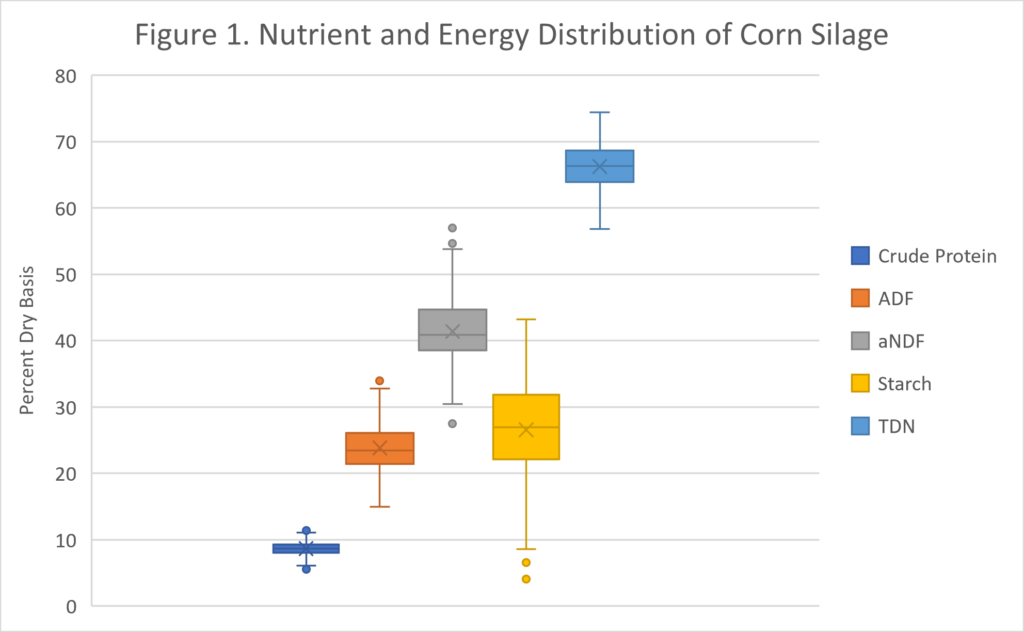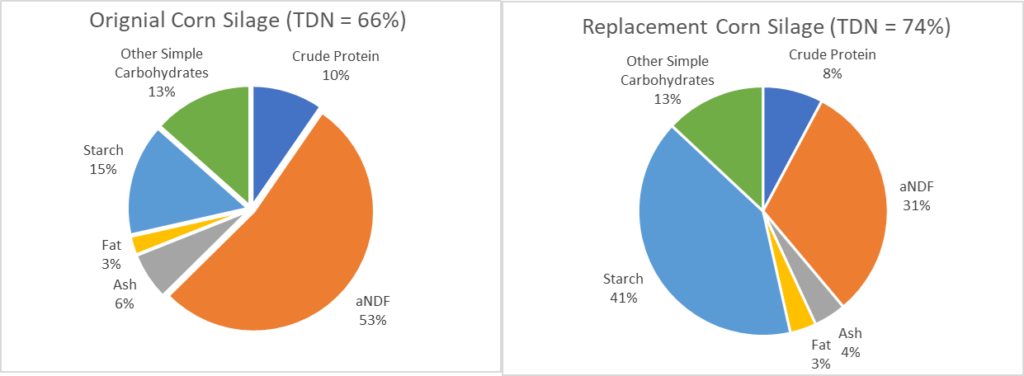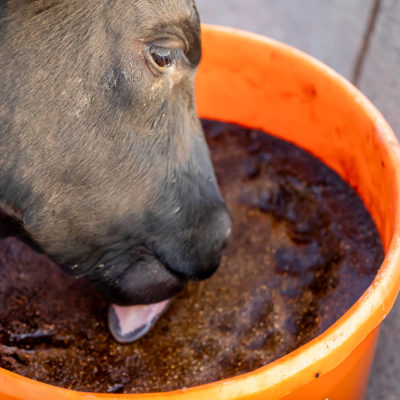When it comes to corn silage for beef cows, there is more to consider than the average forage. Corn silage is more like a mixed feed due to the corn grain. Therefore, some of the conventional wisdom behind understanding a forage report may not hold up. The prevalence, or in some cases lack of corn grain can greatly impact how corn silage should be fed out.
Corn Silage and Acidosis
Recently, a producer called and described her cattle as being unthrifty, “bloaty” and having a reduced appetite. The producer was inquiring about microbial pathogen tests such as listeria. She mentioned that they had recently switched silages and believed there was a pathogen to be blamed. However, we determined it wasn’t a pathogen problem, but a feed management issue.
We examined the two corn silage sample analysis side by side:
|
Nutrient |
Original Corn Silage | Replacement Corn Silage |
|
Crude Protein (% Dry Basis) |
9.6 | 7.8 |
|
Total Digestible Nutrients (% Dry Basis) |
66 |
74.2 |
| amylase-treated Neutral Detergent Fiber (% Dry Basis) | 53 |
31 |
| Starch (% Dry Basis) | 15 |
40.5 |
When the producer had switched from feeding the original silage to the replacement. They had not considered the reported nutrient differences and continued feeding at the same inclusion rate. So, the symptoms she had observed in her cattle were due to higher levels of starch and less fiber resulting in a low level of acidosis in her heard.
Corn Silage and Rumen Microbes
When we feed corn silage as part of our beef cow ration, we need to consider this as a mixed feed containing both forage and grain. When the producer fed the corn silage in the ration at the same rate, jumping from just 15% starch to 40% starch, the rumen microbes were not given enough time to catch up. With a jump in readily available carbohydrates comes a decrease in rumen pH, acidosis occurs.
In the rumen there are microbes which excel at digesting forages or high fiber diets and microbes that digest sugars or simple carbohydrates. The balance of these microbes determines if the cow can handle high concentrate diets without issue. It is standard practice when adding corn, distillers, or other high energy feeds to the diet to use a series of ‘step-up’ rations to get the cattle on to the high energy final ration. This allows the rumen populations to shift from fiber fermenters such as cellulolytic bacteria, to amylolytic bacteria and protozoa which thrive on highly soluble carbohydrates. Without these step-up rations, acidosis can occur impacting cattle performance and health.
Corn Silage Nutrient Distributions
As in the example above, corn silage is different than other forages due to the corn grain. However, like the example, not all corn silages are created equal. Some have more corn grain than others. This can be due to drought conditions, fertilization protocols, hail damage, and other environmental factors. As with the two samples fed by this producer, the amount of grain in the corn silage can have effects on the nutrient concentrations within the silage. High grain silages will have more starch. Figure 1 show distribution of key nutrients and energy in corn silage samples submitted to Ward Laboratories, Inc. August 2022 through February 2023 (n= 254).

There is variability across all the nutrients and energy. However, starch is the most variable demonstrating the large differences in grain content corn silage can have. Fiber and energy concentrations are also notable and impact how the silage should be fed out. Energy variability may impact the feeds that should be fed with the silage. High energy silages may need a low-quality roughage to induce scratch factor and lower energy silages may even require more concentrate supplementation when fed to lactating beef cows.
Factors affecting energy and feeding out corn silage
When examining what nutrients impact total digestible nutrients (TDN, energy) in corn silage, starch (R2 = 0.70) was the dominant nutrient. Not Surprisingly, amylase treated Neutral Detergent Fiber (R2 = 0.65), Acid Detergent Fiber (R2 = 0.62), and digestible NDF at 48 hours (R2 = 0.61) also impacted the energy level in the silage. Since fibers are displaced when there is more starch and vice-versa, it makes sense that with more starch and less fibers corn silages have a higher TDN value and with more fiber corn silages have a lower TDN value. Let’s recall the first two producer samples we examined (Figure 2):

Figure 2 makes a clear visualization showing how impactful differences in starch and aNDF can be. When examining a numerical report, visualizing how each nutrient impacts other related nutrients can help make important feeding decisions. Understanding that there is more to the report than just protein and energy can make a big difference.
In conclusion, corn silage is highly variable. Because of the corn grain component of this forage, it should be treated as a mixed feed. When evaluating corn silage reports, key nutrients to consider are protein, fibers, fiber digestibility and starch. All of these nutrients can give producers insights regarding how to feed a new pile of silage. High starch silages will be low in fiber and high in energy and step-up rations may be required to allow rumen microbes to acclimate. Low starch silage will be high in fiber and may require more grain supplementation to reach energy requirements for production goals. Testing corn silage for beef cows paired with careful inspection of the report can help prevent acidosis and promote optimized beef cow performance.




